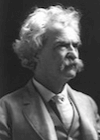Sonnet 73
by William Shakespeare
Shakespeare used a different metaphor in each quatrain to compare to growing old in Sonnet 73. This poem is typically studied in grades 9-10.



That time of year thou mayst in me behold,
When yellow leaves, or none, or few do hang
Upon those boughs which shake against the cold,
Bare ruined choirs, where late the sweet birds sang.
In me thou seest the twilight of such day,
As after sunset fadeth in the west,
Which by and by black night doth take away,
Death's second self that seals up all in rest.
In me thou seest the glowing of such fire,
That on the ashes of his youth doth lie,
As the death-bed, whereon it must expire,
Consumed with that which it was nourished by.
This thou perceiv'st, which makes thy love more strong,
To love that well, which thou must leave ere long.
Sonnet 73 was featured as The Short Story of the Day on Sun, Jan 01, 2012
Featured in our selection of Poetry for Students.
9.1
Create a library and add your favorite stories. Get started by clicking the "Add" button.
Add Sonnet 73 to your own personal library.
Add Sonnet 73 to your own personal library.
Return to the William Shakespeare Home Page, or . . . Read the next poem; Sonnet 74









